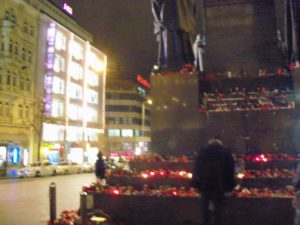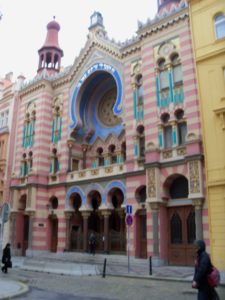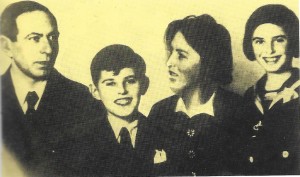I own a later edition of this book, which features drawings and poetry from children who were in Terezin. Most of these drawings and poems are owned by the State Jewish Museum in Prague, and they were selected from more than 4,000 drawings and poems in the museum’s archives. Many of these works of art were created from any materials the children could find, such as scraps of paper, office forms, wrapping paper…This original edition featured reproductions that were far clearer and more vivid than the later editions. The paper felt heavy and opaque with beautifully vivid illustrations. Yet for me, two of the most poignant drawings were simple pencil lines depicting the outline of a child’s hand and sketches of butterflies. The hand was drawn by a boy named Frantisek Brozan and the butterflies by Eva Bulova. Almost nothing is known about them, but they were among the thousands of children who were sent to Auschwitz and murdered. There was a section in the back that featured biographical information on the authors and artists, but for most all that is known is what is gleaned from camp records: date and place of birth, date of transport to Terezin, whether they survived or died. In later editions, this section is still included, but all these years later no more biographical information has been discovered. Most of these young creators have been all but lost to history. That was the thought that stayed with me as I closed the book, leaving the two ribbon bookmarks at the page containing the poem “The Butterfly”, the one that captivated me from the start.

Later, after the visit, I researched the professor who donated this book. His name was Ulrich K. Goldsmith, and he was born to a Jewish family in Freiburg, Germany in 1910. He fled the country in 1932, passing through England and Canada before settling in the United States, where he received a PhD in literature from the University of California at Berkley. In 1957 he arrived at the University of Colorado, Boulder where he was the chair of the Department of Germanic languages and literature and co-founded the Comparative Literature department. He was known as a remarkable humanist and scholar of Stefan George and Rainer Maria Rilke. After his death in 2000, the university established a memorial prize in his name. Little else seems to be recorded about him, though surely his former students and colleagues have memories of him. Unfortunately, I don’t know how he acquired one of the original English translations of Children’s Drawings and Poems, or how he came to know the story of Terezin. If Professor Goldsmith were alive today and I had the chance to speak with him I would have asked him about these stories. Most likely, I will never know, but I will always be grateful to him for leaving this remarkable book with the library so that future generations may know the story of Terezin.


